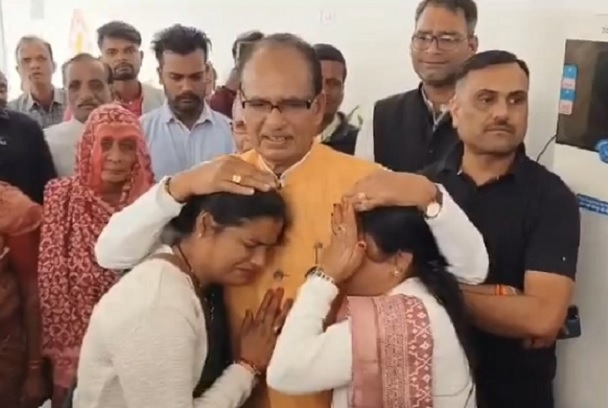‘Diabetes five times, hypertension three times higher in Bhopal tragedy gas-exposed people’

Special Correspondent
NewsBits.in
BHOPAL: New data show that while rates of several (Bhopal disaster) gas exposure induced diseases continue to remain higher, there are several new diseases that are manifesting at a much higher rate among the gas exposed compared to the unexposed population.
At a Press Conference on the occasion of the 40th anniversary of the Union Carbide disaster in Bhopal, members of the Sambhavna Trust Clinic presented analysis of clinical data of 16305 gas-exposed and 8106 unexposed patients who received care at the Clinic in the last 16 years.
According to Sambhavna Trust, the data highlights the need for continued medical research and sustained healthcare services for the survivors of the disaster.
The Sambhavna Trust is a registered charitable NGO set up for the healthcare of the survivors of the Union Carbide disaster in Bhopal. In the last 28 years the Clinic run by Sambhavna has provided free long term medical care to over 37 thousand individuals.
According to Dr Usha Arya, Physician at the Clinic “Rates of diseases known to disproportionately affect gas-exposed populations, such as respiratory illnesses and mental health disorders, remained significantly higher throughout the last 16 years. Both obstructive and restrictive types of respiratory diseases were 1.7 to 2 times higher in the gas-exposed group compared to the unexposed population. Likewise Depression was observed to be 2.7 times more prevalent in the gas-exposed group.”
“However, conditions not previously associated with gas exposure, like Diabetes and Hypertension, were curiously found to be consistently and significantly elevated over the last sixteen years. Diabetes was found to be five times higher among the gas exposed patients compared to the non-exposed. Likewise, Hypertension was found to be over three times higher,” she said
Dr Sonali Mittal, Gynecologist at the Clinic pointed out that several diagnoses were more prevalent in gas exposed women. Hormonal conditions such as early and premature menopause were 2.6 times more frequent in gas-exposed women compared to those not exposed.
Expressing concern at the unfolding clinical picture of the survivors of the disaster, Dr B Raghuram, Physician at the Clinic said, “Kidney-related conditions, possibly triggered by the initial injury from MIC exposure, have remained seven times higher in the exposed group. Acute conditions like myocardial infarction and ischemic heart diseases were found to be 4.5 times more prevalent in the gas exposed population.
Elaborating on the neurological conditions more prevalent among the gas exposed patients, Sambhavna Clinic’s Physician Dr PK Aswathi said, “We find Hemiplegia and Neuralgia to be almost four times more common in the gas-exposed group.”
“Neuropathy, likely influenced by factors such as diabetes, was found to be seven times more prevalent in the exposed population. We also find that Hypothyroidism, metabolic disorder has been rising over the past seven years in both populations but remains 1.7 times higher in the gas-exposed group.”
In conclusion Dr Satinath Sarangi, Founder trustee and consultant, Sambhavna Trust said, “The generation and analysis of the clinical information was possible because of the efficient Medical Information System devised by our staff our data clearly shows a consistent pattern of higher morbidity in both known and emerging conditions among gas victims even in the fourth decade since the disaster. These observations highlight the continuing critical need for specialized health care of the Bhopal survivors.”









